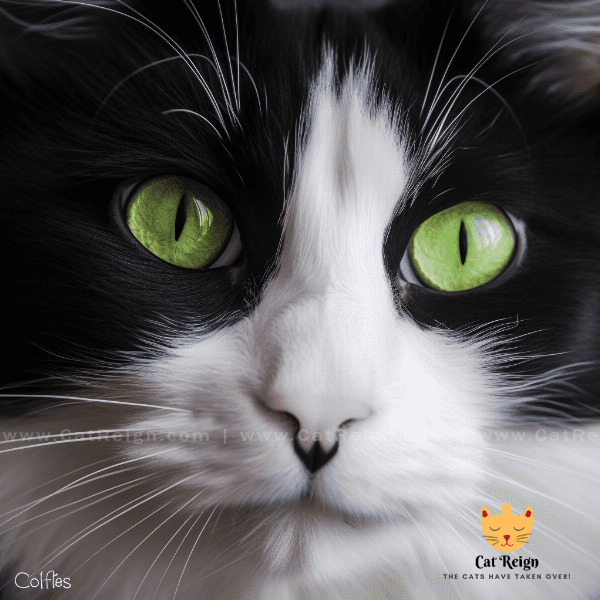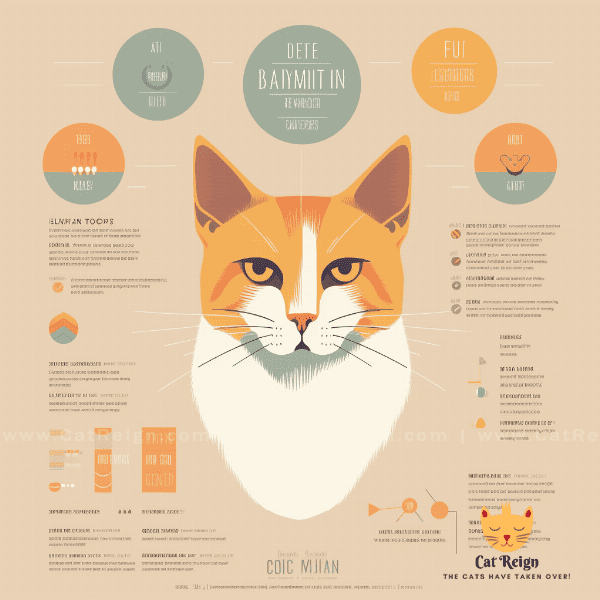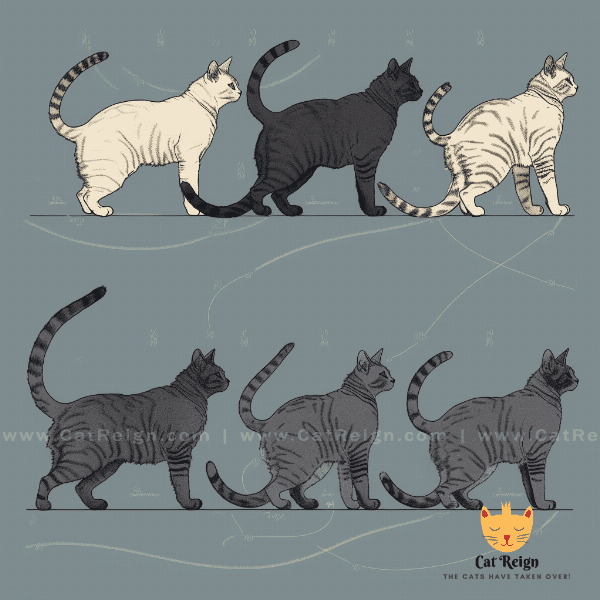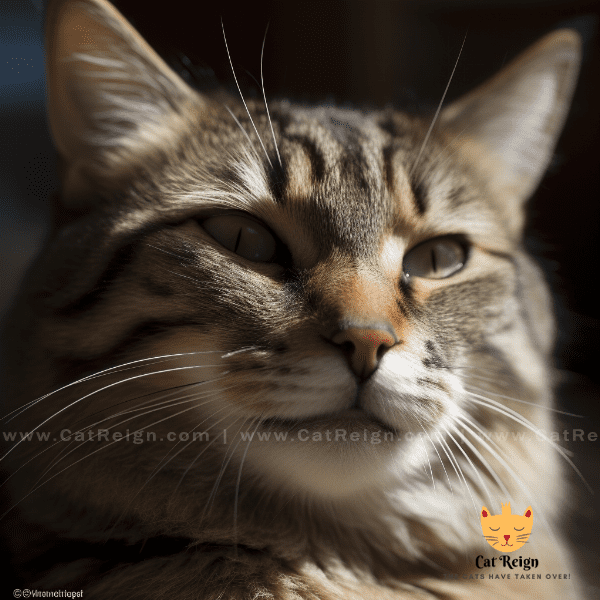Table of Contents
- Signs of Anxiety in Cats
- Common Causes of Anxiety in Cats
- Interpreting Your Cat’s Body Language
- Vocal Cues and Communication
- Behavioral Changes to Watch For
- Reducing Anxiety in Your Cat
- Seeking Professional Help for Anxious Cats
- Coping Strategies for Cat Owners
- Tips for Creating a Calming Environment
- Understanding Your Cat’s Unique Needs
Signs of Anxiety in Cats
Cats can experience anxiety for a variety of reasons, and it can manifest in different ways. Here are some common signs to look out for:
Increased Aggression or Avoidance
If your cat is normally social but starts hiding, hissing, or swatting when approached, it may be a sign of anxiety. Similarly, if your cat is typically independent but suddenly becomes clingy or demanding, it could also indicate underlying stress.
Excessive Grooming
Cats are fastidious creatures, but excessive grooming can be a sign of anxiety. This can lead to hair loss, skin irritation, and other health problems.
Hiding or Withdrawal
Cats may retreat to a safe space when they are feeling anxious, such as under a bed or in a closet. They may also avoid contact with their owners and seem uninterested in play or affection.
Recognizing these signs of anxiety in your cat is an important first step in addressing their needs. With patience and understanding, you can help your feline friend feel more comfortable and secure in their environment.
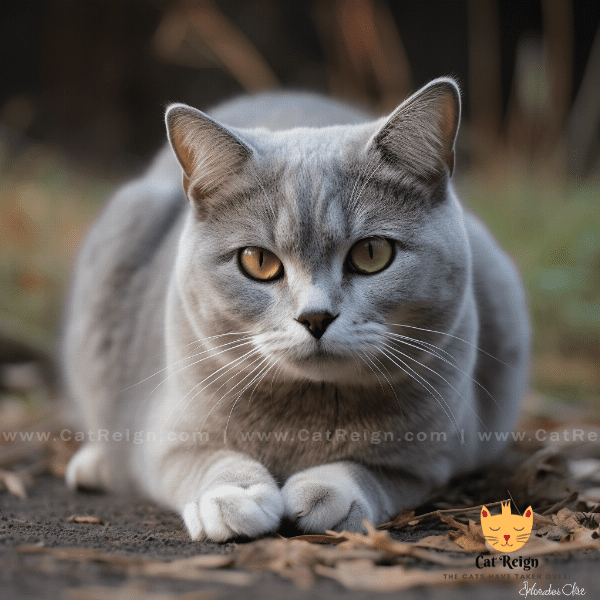
Common Causes of Anxiety in Cats
Cats are sensitive creatures, and they can become anxious for a variety of reasons. Here are some common causes of anxiety in cats:
Environmental Changes
Cats thrive on routine and stability, so any changes to their environment can be stressful. This could include moving to a new home, introducing a new pet or family member, or even rearranging furniture.
Trauma or Abuse
Cats who have experienced trauma or abuse in the past may be more prone to anxiety. This can manifest in various ways, from fear of certain objects or situations to generalized anxiety.
Separation Anxiety
Cats are social animals, and they can become anxious when separated from their owners. This can lead to destructive behavior, inappropriate elimination, and excessive vocalization.
Lack of Stimulation
Cats need mental and physical stimulation to stay happy and healthy. Boredom or lack of exercise can lead to restlessness and anxiety.
It’s important to identify the underlying cause of your cat’s anxiety in order to effectively address their needs. By making changes to their environment, providing mental and physical stimulation, and seeking veterinary care as needed, you can help your cat feel more secure and content.
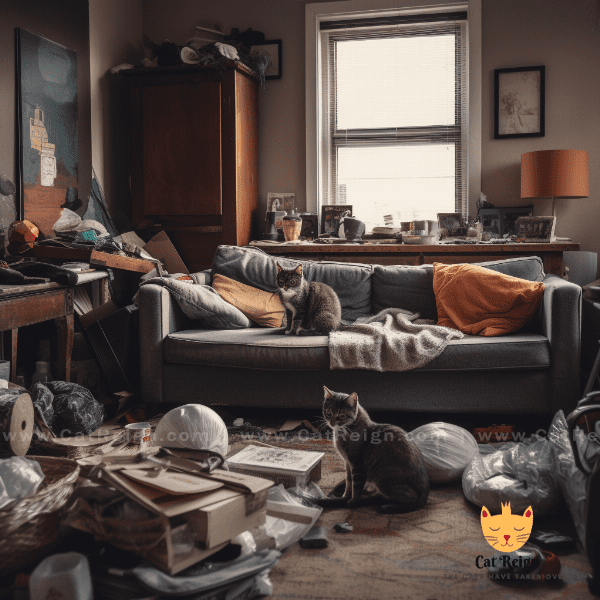
Interpreting Your Cat’s Body Language
Cats communicate through a variety of body language cues, including posture, facial expressions, and tail position. Here are some key signals to look out for:
Ears
Your cat’s ears can provide important clues about their mood. Ears that are held upright and facing forward indicate alertness and interest, while flattened ears suggest fear or aggression.
Eyes
Cats use their eyes to convey a range of emotions, from curiosity to contentment to anger. Dilated pupils can indicate excitement or fear, while slow blinking is a sign of relaxation and trust.
Body Posture
Your cat’s body posture can also tell you a lot about how they are feeling. Arched backs and puffed-up fur indicate fear or aggression, while a relaxed posture with a loosely hanging tail suggests contentment.
Tail Position
Cats use their tails to communicate a variety of emotions, from happiness to annoyance to fear. A tail held high and straight up indicates confidence and happiness, while a tail tucked between the legs suggests fear or anxiety.
Vocalizations
In addition to body language, cats also use vocalizations to communicate. Meowing, purring, and trilling are all signs of contentment, while hissing, growling, or yowling can indicate fear, aggression, or discomfort.
By observing your cat’s body language and vocalizations, you can gain valuable insights into their emotional state. This can help you identify when your cat is feeling anxious or stressed and take steps to alleviate their discomfort.
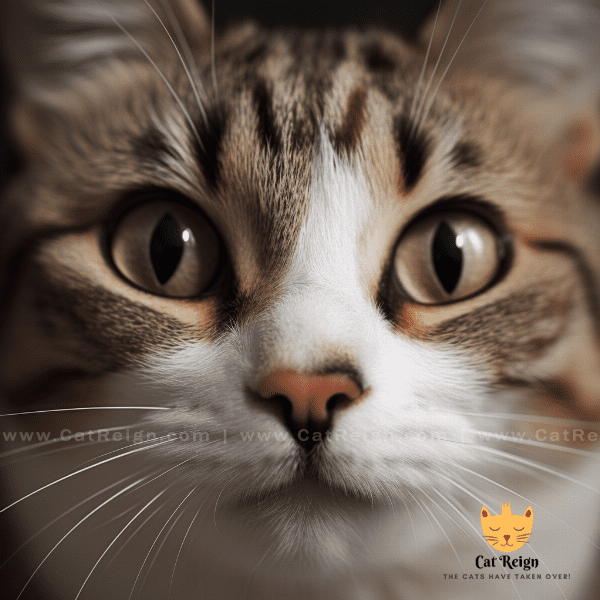
Vocal Cues and Communication
In addition to body language, cats also use vocalizations to communicate with their owners and other animals. Here are some common vocal cues and what they mean:
Meowing
Cats meow for a variety of reasons, from asking for food or attention to expressing discomfort or anxiety. Pay attention to the tone of your cat’s meow – a high-pitched, insistent meow may indicate a sense of urgency, while a soft, gentle meow suggests contentment.
Purring
Cats purr when they are happy and relaxed. This can be a sign that your cat is feeling comfortable and content in their environment.
Hissing
Hissing is a defensive vocalization that cats use to warn off potential threats. If your cat is hissing, it’s important to give them space and avoid approaching them until they have calmed down.
Growling
Growling is another defensive vocalization that cats use to communicate fear or aggression. If your cat is growling, it’s important to respect their boundaries and avoid provoking them.
Chirping or Trilling
Some cats make chirping or trilling sounds to express excitement or anticipation. This can be a sign that your cat is happy and engaged with their environment.
Understanding your cat’s vocal cues can help you better communicate with them and provide for their needs. By paying attention to the tone and context of their vocalizations, you can gain valuable insights into their emotional state and respond accordingly.
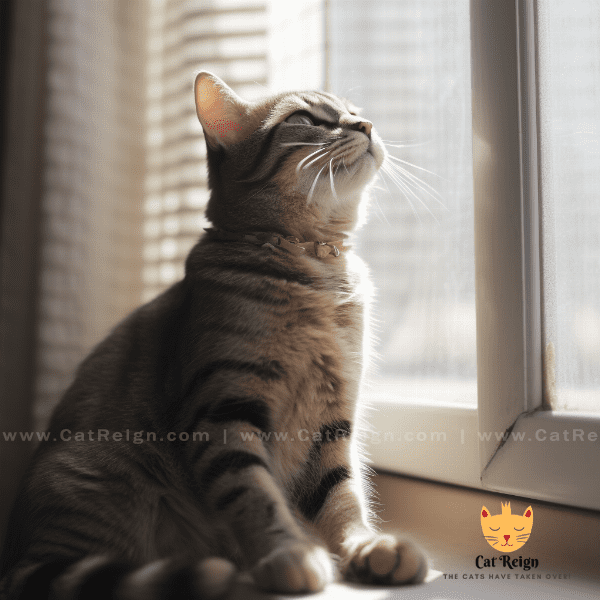
Behavioral Changes to Watch For
Cats who are experiencing anxiety may exhibit a range of behavioral changes. Here are some common signs to watch out for:
Destructive Behavior
Anxiety can also lead to destructive behavior in cats. They may scratch furniture, chew on objects, or engage in other destructive behaviors as a way to cope with their stress.
Increased Vocalization
Cats may become more vocal when they are feeling anxious. This could involve excessive meowing, yowling, or growling, particularly at night.
Aggression or Avoidance
Cats who are feeling anxious may become more aggressive or avoidant. They may hiss, swat, or bite when approached, or retreat to a safe space and avoid contact with their owners.
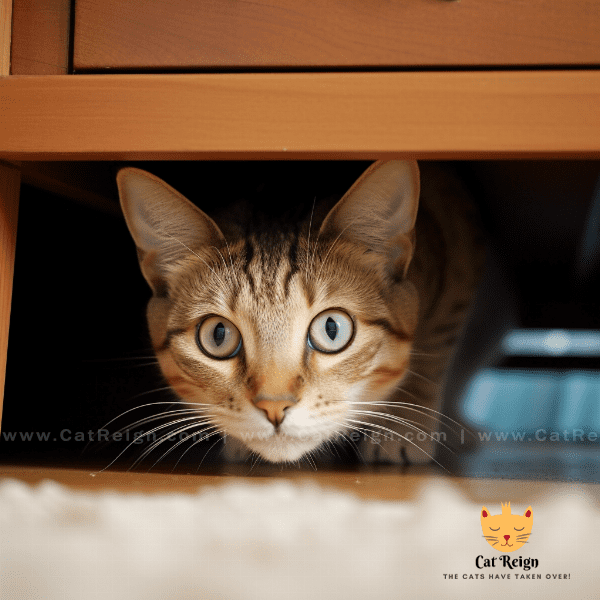
Reducing Anxiety in Your Cat
There are several strategies you can use to help reduce your cat’s anxiety and promote a sense of calm and security. Here are some effective approaches:
Create a Safe Space
Provide your cat with a safe, comfortable space where they can retreat when they are feeling anxious. This could be a cozy bed or a quiet room with their favorite toys and blankets.
Provide Mental and Physical Stimulation
Cats need mental and physical stimulation to stay happy and healthy. Provide your cat with plenty of toys, scratching posts, and opportunities for play and exercise.
Use Pheromone Products
Pheromone products, such as diffusers and sprays, can help reduce your cat’s anxiety and promote a sense of calm. These products mimic the natural pheromones that cats release when they are feeling content and secure.
Consider Medications or Supplements
In some cases, medications or supplements may be necessary to help reduce your cat’s anxiety. Talk to your veterinarian about options such as anti-anxiety medications, natural supplements, or pheromone collars.

Seeking Professional Help for Anxious Cats
If your cat is experiencing severe or persistent anxiety, it may be necessary to seek professional help. Here are some options to consider:
Consult with Your Veterinarian
Your veterinarian can help determine the underlying cause of your cat’s anxiety and recommend appropriate interventions. They may also be able to prescribe medications or supplements to help manage your cat’s anxiety.
Consider Behavioral Therapy
Behavioral therapy can be an effective way to help reduce your cat’s anxiety. This may involve working with a certified animal behaviorist or using techniques such as desensitization and counterconditioning to help your cat overcome their fears.
Explore Alternative Therapies
In addition to traditional approaches, there are also a variety of alternative therapies that may be helpful for anxious cats. These may include acupuncture, massage, or aromatherapy.
Create a Multi-Faceted Treatment Plan
In many cases, a combination of approaches may be necessary to effectively address your cat’s anxiety. Work with your veterinarian and other professionals to create a comprehensive treatment plan that addresses your cat’s unique needs.
Remember that addressing your cat’s anxiety is a process, and it may take time to find the right combination of interventions. With patience, understanding, and professional guidance, you can help your feline friend live a happy, healthy, and anxiety-free life.
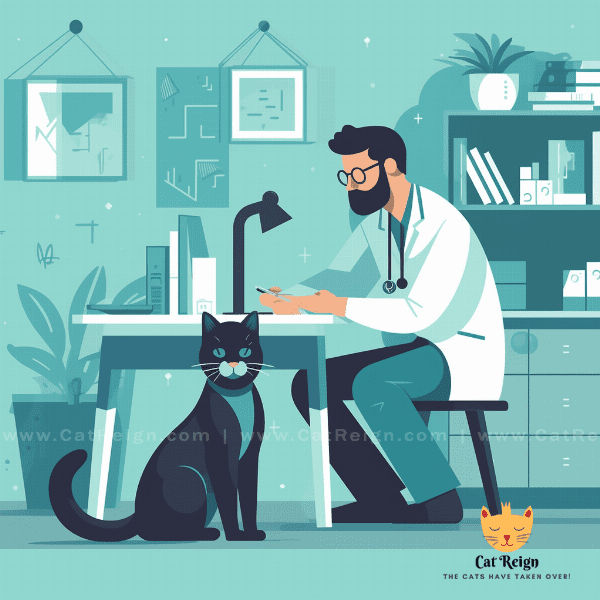
Coping Strategies for Cat Owners
Having an anxious cat can be a challenging experience for owners. Here are some coping strategies to help you manage your own stress and support your cat:
Practice Self-Care
Caring for an anxious cat can be stressful, so it’s important to prioritize your own self-care. Make time for activities you enjoy, such as exercise or hobbies, and seek support from friends and family.
Educate Yourself
Learn as much as you can about your cat’s anxiety and the strategies that can help reduce it. This can help you feel more empowered and better equipped to support your cat.
Be Patient
Addressing your cat’s anxiety is a process, and it may take time to find the right combination of interventions. Be patient with your cat and with yourself as you navigate this journey.
Stay Positive
Maintain a positive attitude and provide plenty of encouragement for your cat. Reward them for positive behaviors and celebrate their progress along the way.
Seek Support
Joining a support group for cat owners or seeking advice from a veterinarian or animal behaviorist can be helpful for managing the challenges of caring for an anxious cat.
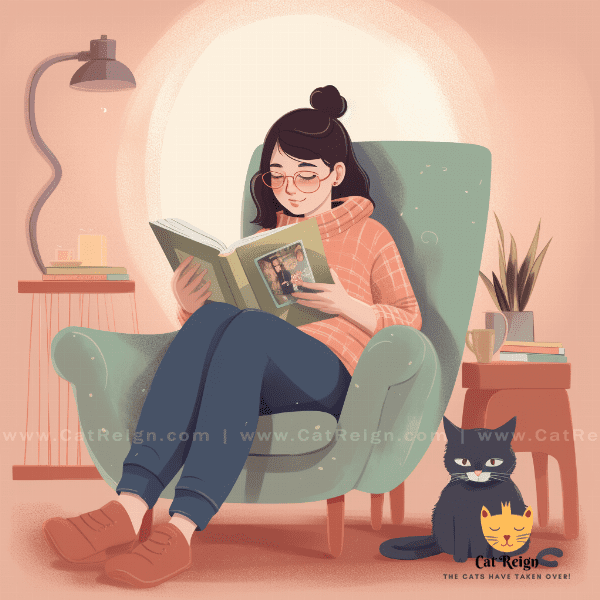
Tips for Creating a Calming Environment
Creating a calm and secure environment is key to reducing your cat’s anxiety. Here are some tips for creating a calming environment for your feline friend:
Provide a Cozy Bed
Cats need a comfortable and cozy place to rest and retreat when they are feeling anxious. Provide your cat with a soft, comfortable bed that is located in a quiet and safe area of your home.
Use Soft Lighting
Harsh or bright lighting can be overstimulating for cats and may contribute to anxiety. Use soft, diffused lighting in your home to create a calming and soothing atmosphere.
Use Calming Scents
Certain scents, such as lavender or chamomile, can be calming for cats. Consider using a diffuser or spray that contains these scents to help promote a sense of calm.
Play Calming Music
Soft, slow-tempo music can help reduce your cat’s anxiety and promote relaxation. Experiment with different types of music to find what works best for your cat.
Provide Hiding Spots
Cats often feel more secure when they have a place to hide or retreat when they are feeling anxious. Provide your cat with a variety of hiding spots, such as cardboard boxes or tunnels, to help them feel more secure.
Keep a Consistent Routine
Cats thrive on routine and stability, so maintaining a consistent schedule can help reduce their anxiety. Try to feed your cat at the same times each day and maintain a consistent schedule for play and exercise.
By implementing these tips, you can help create a calming environment for your cat and reduce their anxiety. With patience, understanding, and the right interventions, you can help your feline friend feel more comfortable and secure in their environment.
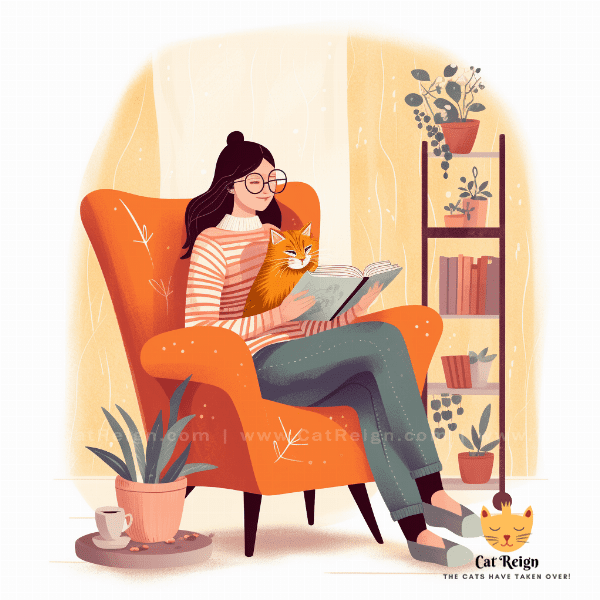
Understanding Your Cat’s Unique Needs
Every cat is unique and may have different needs when it comes to managing their anxiety. Here are some factors to consider when understanding your cat’s unique needs:
Personality
Just like people, cats have their own unique personalities. Some cats may be more social and outgoing, while others may be more reserved or anxious. Understanding your cat’s personality can help you better anticipate their needs and respond appropriately.
Past Experiences
Cats who have experienced trauma or abuse in the past may be more prone to anxiety. Understanding your cat’s past experiences can help you provide them with the care and support they need to feel safe and secure.
Health Issues
Underlying health issues can also contribute to anxiety in cats. If your cat is experiencing persistent anxiety, it’s important to seek veterinary care to rule out any underlying health conditions.
Environmental Factors
Cats are sensitive to their environment and can become anxious in response to changes or stressors. Understanding your cat’s environmental needs and preferences can help you create a calming and comfortable space for them.
Response to Interventions
Different cats may respond differently to various interventions for anxiety. It’s important to monitor your cat’s response to different approaches and make adjustments as needed.
By understanding your cat’s unique needs and responding appropriately, you can help reduce their anxiety and promote a sense of calm and security. With patience, understanding, and the right interventions, you can help your feline friend live a happy, healthy, and anxiety-free life.
